
Star Trek Lower Decks and Transmedia Storytelling
Transmedia storytelling is a product of an ever-expanding media-scape that entices writers to diversify their work between media or ‘mediums’. This paper will explore and explain Transmedia as a concept while using the Star Trek franchise as a case study. Focus will be drawn towards Star Trek Lower Decks, the franchises’ latest iteration as an example how transmedia works, particularly its benefits and its drawbacks.
What is transmedia?
Media has evolved over the decades to accommodate the artists’ drive to create and express themselves in multitude of ways. Introduction of new media forms such as music videos for instance enabled musicians to approach their art with new perspectives and fostered creativity and innovative ideas to showcase an amalgamation of musical talent and visual aesthetics. The 80s hit song ‘Video killed the radio star’ by The Bugles illustrates quite literally the paradigm shift that occurs when new media becomes accessible to artists, you either adapt or get left behind.
In a fascinating move to adapt to an ever-expanding landscape, over the decades we can observe a growth in the interconnectedness of art across several forms of media. Examples can be seen with art being adapted from text forms like novels into video as television series and series being adapted into full-scale cinematic experiences for the big screen. The underlining factor with art progressively traversing media forms is that the narrative of that art is always constant, the media form or medium which delivers the art becomes fluid. This narrative voyage across mediums is where the term transmedia becomes involved (Jenkins,2021).
The term transmedia is a model of media under the overarching term that is Intermediality. Intermediality is a broad term to describe art between media, best put by American artist Dick Higgins “art with no fixed aesthetic category” (Higgins, 2001)
Transmedia simply put is the formation of a structured relationship of a narrative between different media platforms. An example being J.R.R Tolkien’s The Lord of The Rings maintaining a structured narrative as a novel, animated film, a live action film, a videogame, and a television series (Schröter, 2011).
Transmedia products are usually start with a single media platform that is positively received. With positive feedback comes a desire to explore the universe of that piece of art from multiple dimensions. One can argue that if The Lord of Rings in its original text form had been negatively reviewed it would not have given birth to it’s several iterations of Tolkien’s universe. Transmedia consumption comes from a fixed audience and its desire to dig deeper into the world created by a form of art. It excites audiences and invites them to piece together backstories of characters and unexplored subplots. (Mieko, 2021)
This is no different in our present-day experience with new forms of media, specifically media we consume through video streaming services like Netflix or Amazon Prime video. The most popular and successful franchises such as Harry Potter, Star Wars and Star Trek have all mastered the art of spreading their narrative eggs across several media baskets, as an assurance of relevance and success. If one form of storytelling isn’t up to its consumers likings they can compensate with the success of another form of media.
Star Trek
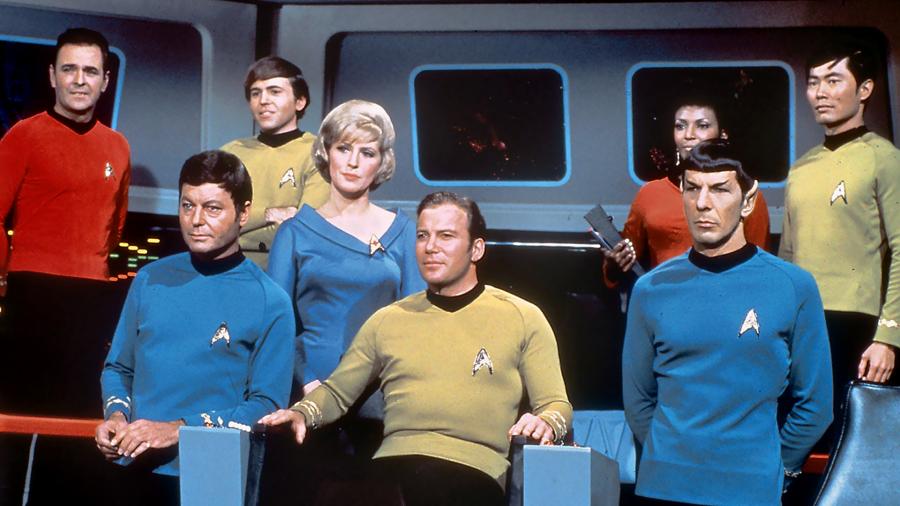
Star Trek is a popular science fiction media franchise, it is the vision of screenwriter Gene Rodenberry. The franchise started as a television show in 1966. The primary narrative behind the television series is comprised around space exploration in the 23rd century. In this future, Earth is part of an intergalactic community called The United Federation of Planets. The television show focuses on the voyages of the Federation flagship USS Enterprise on its mission “to explore strange new worlds, to seek out new life and new civilizations and to boldly go where no one has gone before” (Siede, 2021)
Star Trek’s episodic format has the crew of the Enterprise encountering new species and tackling ethical and socio-political issues. The original series released in 1966 featured one of the first ethnically diverse casts as well as the first on-screen interracial kiss. In many ways Star Trek was ahead of it’s time as segregation was still prevalent in the United States. It was a popular television show with high ratings. Star Trek’s success came from its idealistic vision of the future and its provocative narratives that held a mirror back at present day humanity especially around topics like civil and politic rights, war and collaboration for the greater good.
From the television shows success came a number of iterations all within the established universe of the original series, spanning from an animated series to a continuation of the voyages of the USS Enterprise with a new crew set in the distant future from the original series. This new television show called Star Trek the Next Generation (TNG). TNG would introduce an even more complicated plot and narrative that introduced two separate spinoff television series, Star Trek Deep Space Nine, a show about a space station guarding an important wormhole and Star Trek Voyager, a television series about a lost starship’s journey home from the opposite side of the galaxy.

As of present Star Trek boasts 11 television series, 850 novels, 13 film and hundreds of games spanning from tabletop to massively multiplayer online roleplaying games (MMORPG). All sharing and developing on the initial narrative envisioned by Gene Roddenberry in 1966. This is a prime example of transmedia at work as different media platforms share the same narrative and advance it in an intertwined network. (Siede, 2021)
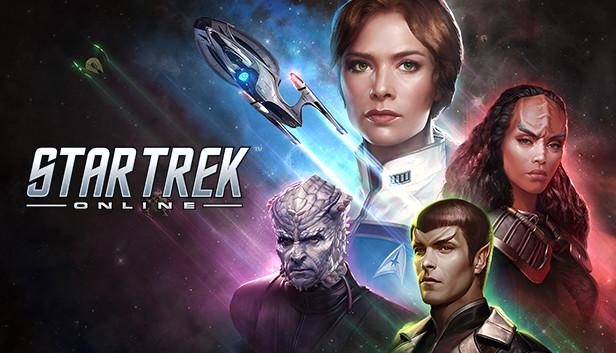
While the franchise had grown from television series to videogames and novels the general tone of Star Trek was mature with a narrative of space diplomacy and interspecies cultural understanding at the forefront. This level of seriousness has been challenged by one of the newest of television series of the Star Trek Franchise, Star Trek Lower Decks.
Star Trek Lower Decks is an animated television series that sets itself from other television series in the franchise because it takes a comedic approach to its storytelling. An animated series isn’t a new leap for Star Trek, as that has been done before. However, a comedic series is new territory and deviates from the traditional drama filled episodes that Star Trek and it’s fans ‘Trekkies’ are used to. Star Trek Lower Decks illustrates the issues that come with an ever-expanding transmedia franchise.
To properly illustrate the deviation the creators took with Lower Decks, it is important to label the typical signifiers of a traditional Star Trek television show these signifiers can be broken down between the ship, the crew and the mission.
The Ship
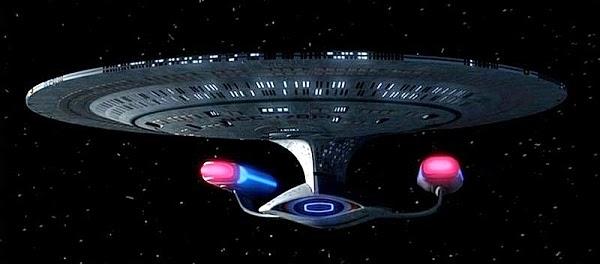
A typical Star Trek series features a diverse crew on a starship, this starship in many cases is part of the Enterprise lineage. In the Star Trek universe, the Enterprise is the most popular starship and serves as the ship that the protagonists of the story operate. The crew of the original series served on the Enterprise-A while the crew on the Next Generation served on the Enterprise-D. The ship is just as much a character as are the members of its crew. If the ship isn’t the Enterprise, then it is a ship with a special trait, for example the ship featured in Star Trek Deep Space Nine was a ship bred solely for war.
The Crew
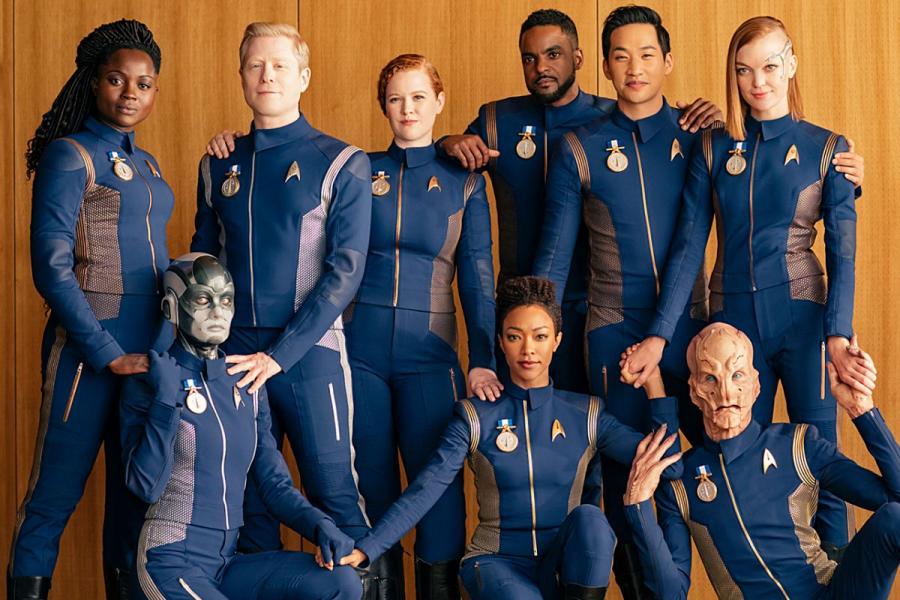
As mentioned, the crew is a diverse cast of primarily humans and other alien species. The crew in star trek series are always officers. Officers are important members of the bridge crew, crew members that serve on the bridge of the Starship, the most important part of the starship and are responsible for directly operating the starship. The crew is normally led by a charismatic captain with a unique set of strengths and flaws, this character is always the showrunner of the series and must always be challenged with dilemmas on an episodic basis that illustrate just what type of captain they are.
The Mission
The mission is always built on the founding tenets of the Federation of Planets which is to seek out new life and civilizations. While exploration as a mission is an innocent one, crisis usually arises through discovering a confrontational species that challenges the crew with an identity-crisis as they try to come to terms with whether they are diplomats, explorers, or members of a space military force. This crisis is normally solved with via a flashy space battle between the protagonist ship and the enemy who refuses to listen to diplomacy.
Lower Decks
Star Trek Lower Decks deviates from these tropes completely into a space of self-realization and satire, unlike other franchise series, it does not take itself seriously at all. The premise behind Lower Decks is Star Trek from the point of view of the crewmates that aren’t the stars of the show, the regular crew members that live and work in the Lower Decks of the starship, the non-vital areas that the audience usually isn’t interested it.
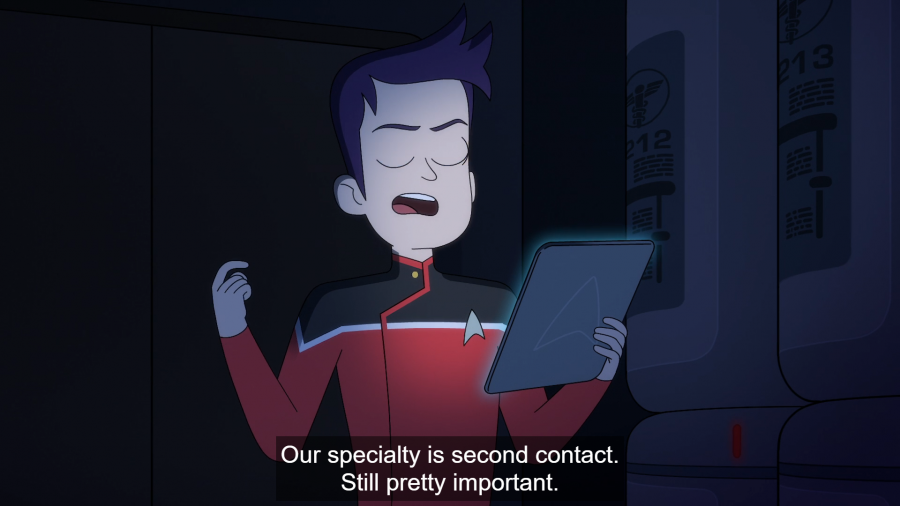
Lower Decks features the USS-Cerritos a ship designated to conduct second contact with alien species that protagonist ships like the USS-Enterprise have already discovered. The ship itself purposefully has a less than inspiring visual allure than other ships in the series to drive home just how unimportant it is. The Cerritos’ duty is strictly administrative boring paperwork such as making sure the planets name of the new species is spelt right. The crew is also unremarkable. This however is the charm of the show because they aren’t held to the same standards of perfection that is depicted in other Star trek television series. Lower Decks makes fun of the franchise as a whole by referencing absurd storylines from past television series as well as having guest starts from other series feature in wacky encounters.
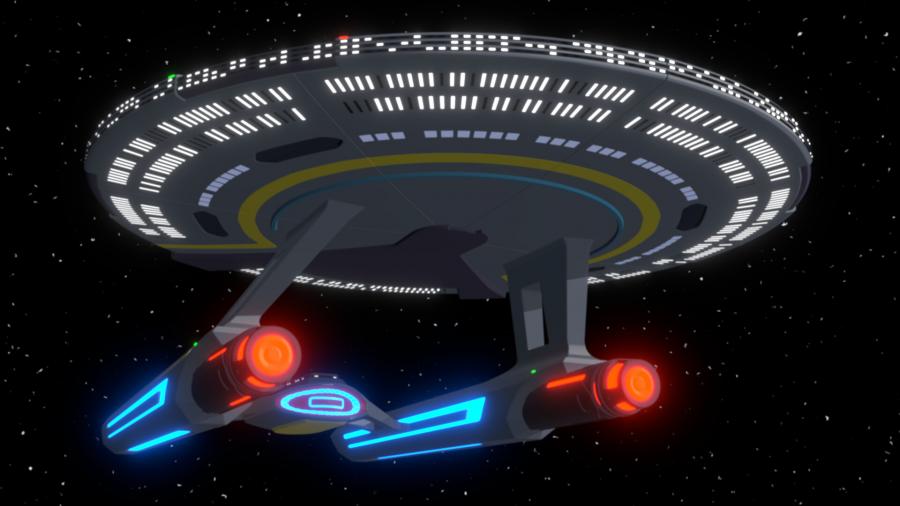
While Star Trek Lower Decks is still within the realms of a television series as a medium it separates itself as a different artform because it completely deviates from the genre traditionally set by Star Trek television series. This deviation can be seen as a kind of sub-transmedial departure. There are positives with having transmedial storytelling devices, it can strengthen a narrative by painting a broader picture of the narrative and tell a similar story through a different artistic lens such has comedy. Lower Decks is heavily criticized for its departure into comedy highlighting an issue with transmedia, if an integration of a narrative has a severely negative review it can influence the whole narrative because of the conjoined narrative.
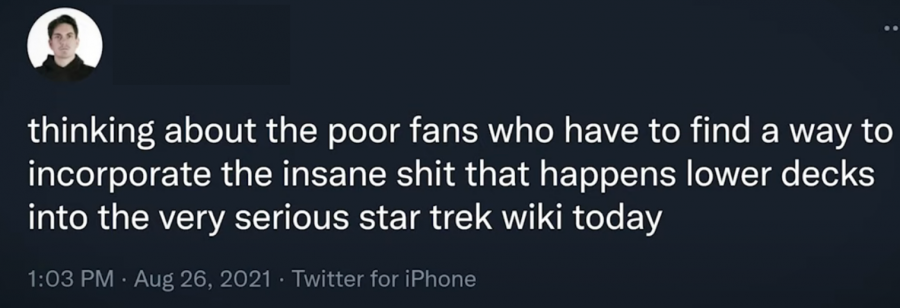
This brings forth an issue with transmedia, the issue of cohesive narrative continuity, otherwise known as ‘canon’. When several transmedial iterations of a narrative are made complex, it is easy for plots of to overlap and for audiences to take issue or notice inconsistencies with the plot especially when the plot is adapted to a new form of media or a new genre. Inconsistencies and different creative approaches can divide audiences who have a vested interest in the plot of a television series.
Transmedia is an ever-expanding phenomenon that exponentially grows with introduction of new media. It allows artists to play around with the narratives they’ve created and envision them in a diverse array of different media. This is no different with Star Trek and especially Lower Decks as animated iterations of narratives are not held to the same standard as their live action counterparts.
References
Transmedia What? by Henry Jenkins. (2021). Retrieved 20 August 2021, from https://immerse.news/transmedia-what-15edf6b61daa
Mieko, S. (2021). Intermedia/Transmedia | post. Retrieved 20 August 2021, from https://post.moma.org/intermedia-transmedia/
Schröter, J. (2011). Discourses and Models of Intermediality. Clcweb: Comparative Literature And Culture, 13(3). doi: 10.7771/1481-4374.1790
Higgins, D., & Higgins, H. (2001). Intermedia. Leonardo, 34(1), 49-54. doi: 10.1162/002409401300052514
Star Trek, explained for non-Trekkies. (2021). Retrieved 20 August 2021, from https://www.vox.com/2016/9/6/12363628/star-trek-explained-50th-anniversary